You’ve seen the photos: tangled alleys filled with scooters, bowls of steaming pho on plastic stools, and lakeside scenes that look like they belong in a different century. You’re intrigued—but also unsure. Is Hanoi too chaotic? Will it be family-friendly? Is it worth squeezing into your itinerary?
Totally fair questions. And if you’re a first-time Hanoi visitor—whether you’re travelling with your partner, friends, or kids—you want to know you’re making the most of your time. No fluff. No tourist traps. Just real, memorable experiences.
This guide is here to help. With the right info, Hanoi goes from overwhelming to exhilarating. You’ll get clear advice on where to go, what to eat, how to get around, and what not to miss—whether you’ve got a few hours or a couple of days. So let’s make your trip smoother, tastier, and a whole lot more fun. Here’s everything you need to know to fall in love with Vietnam’s capital.
1. Why go to Hanoi?
If you want to experience Vietnam’s culture at full volume, Hanoi - the capital - is where you start.
Hanoi’s charm lies in its contrasts. One minute you’re dodging scooters in the Old Quarter, the next you’re sipping egg coffee in a peaceful corner. It's both the cultural and political capital of Vietnam, but it doesn’t shout about it—it just is.
While cities like Ho Chi Minh City feel modern and business-focused, Hanoi feels older, deeper, more reflective. You feel it in the early morning tai chi around Hoan Kiem Lake. You hear it in the crackle of charcoal grills and the calls of street vendors. You see it in the fading yellow walls, moss-covered temples, and narrow tube houses stacked like shoeboxes.
And unlike some destinations where everything is built for tourists, Hanoi is unapologetically local. People live their lives out in the open here—eating, working, socialising on the streets. You don’t watch Hanoi from a distance; you become part of it. Whether you’re after history, food, photography, culture, or just a good dose of travel energy, Hanoi delivers. It’s walkable, rich in atmosphere, and endlessly rewarding to explore.
2. A glimpse into Hanoi’s history
Hanoi wears its history in plain sight—but to truly appreciate it, it helps to know where it all began.
The site where the city now stands has been inhabited since the Neolithic Period, but Hanoi as we know it began in AD 1010, when Emperor Ly Thai To moved the capital here from Hoa Lu. He named it Thang Long, meaning Ascending Dragon, inspired by a dragon he believed rose from the Red River. That name set the tone for what would become Vietnam’s political and cultural centre for over a millennium.

Hanoi’s status shifted in 1802, when Emperor Gia Long, founder of the Nguyen dynasty, chose Hue as his imperial seat. Hanoi became a regional capital, its national influence fading for a time. Then, in 1831, Emperor Minh Mang renamed the city Hà Nội—'Hà' meaning river, 'Nội' meaning interior—referencing its location tucked between branches of the Red River.
Under French colonial rule from 1902 to 1945, Hanoi was transformed. Grand boulevards, colonial villas, and Catholic churches appeared, shaping the city's distinctive architectural blend. During this period, Hanoi became the political and cultural capital of French Indochina, but also a centre of Vietnam’s resistance movement.
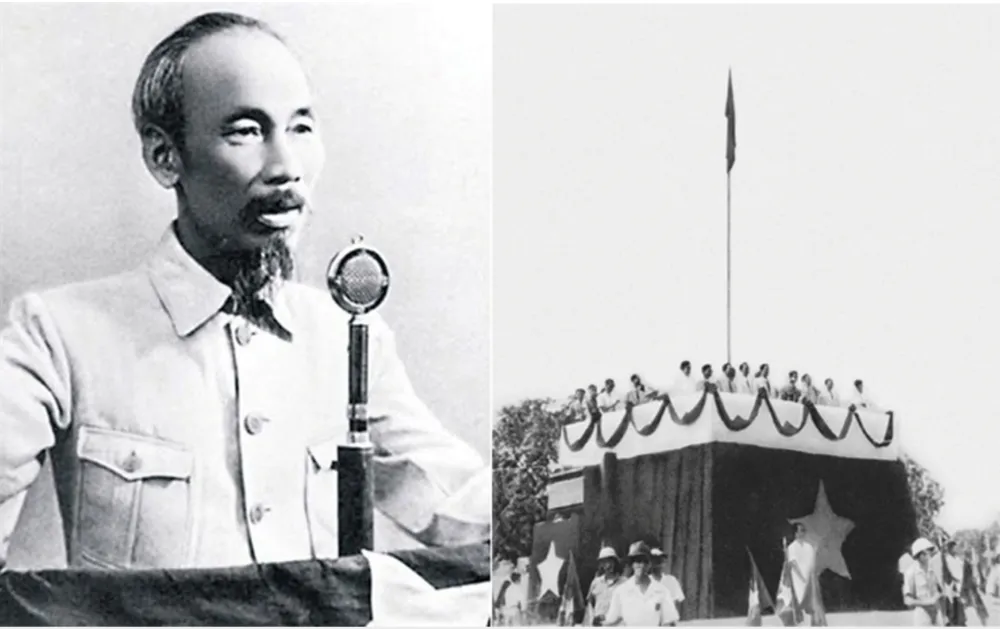
In 1945, following the August Revolution, Ho Chi Minh stood in Ba Dinh Square and declared Hanoi the capital of the newly-formed Democratic Republic of Vietnam. The French regained control briefly, sparking the First Indochina War, but were driven out by the Viet Minh in 1954 after the Geneva Accords.
Hanoi’s modern scars tell the story of the Resistance War against America to save the nation. Heavy bombing campaigns in the 1960s and 70s damaged large parts of the city. One major target was the Long Bien Bridge, a vital link across the Red River. Bombed repeatedly, it was repaired again and again by the locals, and today it stands as a symbol of Hanoi’s resilience and strength.
Fast-forward to the early 1990s, and Hanoi was still a city of bicycles and Soviet-era buses. Motorbikes—now practically part of the city's DNA—were rare. Since then, rapid urbanisation has transformed Hanoi into a bustling capital of over 8.5 million people. But that growth comes with trade-offs: conservationists are in a race to preserve what remains of Hanoi’s historic architecture, even as modern high-rises and concrete developments multiply.
For travellers, that means one thing: get in while the city's deep blend of Vietnamese, French, Russian, and American influences is still visible. Hanoi is modernising fast, but its story is still written in its streets—if you know where to look.
3. When to visit Hanoi?
Hanoi has a typical tropical monsoon climate, with four distinct seasons – a rare characteristic among Asian cities. Each season brings its own unique beauty, but the ideal time to visit Hanoi is from October to April, when the weather is cooler, drier, and more comfortable for sightseeing.
That said, every season in Hanoi has its own flavour. Knowing what to expect helps you plan better and enjoy your trip at the fullest.

Seasons at a glance
Spring (March–April)
Possibly the best time to visit. Days are warm, skies are mostly clear, and the city is covered in blooming flowers and fresh green. Ideal for walking tours, lake strolls, and outdoor dining.
Summer (May–August)
Hot, humid, and wet. Expect frequent downpours, especially in July and August. That said, this is when Hanoi is at its most vibrant—locals are out late, street food stalls buzz, and the tropical plants look their best. Just pack light, breathable clothes and don’t forget the mosquito repellent.
Autumn (September–November)
Widely considered the sweet spot. Temperatures cool down, humidity drops, and the city feels crisp and golden. It’s also festival season, with the Mid-Autumn Festival, and the scent of green rice in the air.
Winter (December–February)
Hanoi winters can surprise you. It gets chilly (especially in January), with temperatures dropping to around 10°C. There’s rarely heating indoors, so bring layers. The misty, grey atmosphere gives the city a quieter, more reflective feel. If you visit in late January or February, you’ll catch the vibrant build-up to Tet celebration. Streets come alive with red and gold decorations, flower markets, and a festive, hopeful energy, making it a deeply cultural time to visit Hanoi.
Festivals and events
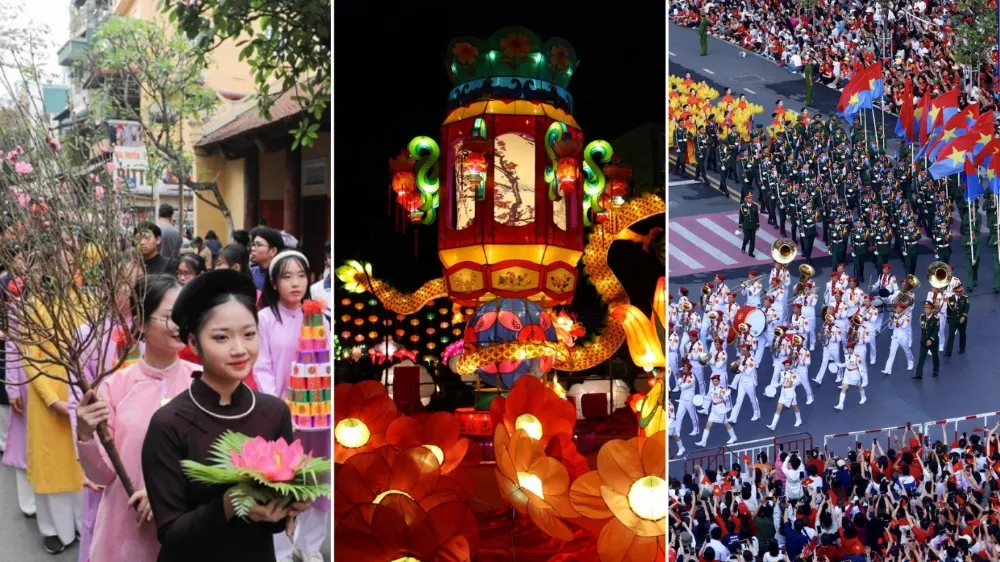
- Tet (Vietnamese Lunar New Year)
Tet Holiday usually happens in late January or early February. Hanoi slows down dramatically—many businesses close, families return to their hometowns, and streets can be unusually empty. Great if you want to see a quieter side of the city, but tricky for food and sightseeing.
Mid-Autumn Festival (September)
A joyful celebration with lanterns, mooncakes, and dragon dances, especially in the Old Quarter. Vietnamese Moon Festival would bring fun for families and anyone who loves a festive buzz.
Vietnam National Day (September 2nd)
This public holiday marks Vietnam’s declaration of independence in 1945, and is celebrated with flag displays, parades, and fireworks across the country. In Hanoi, the area around Ba Dinh Square becomes a focal point, and streets are decked in red and gold. Expect larger crowds and traffic restrictions near key monuments, but also a strong sense of national pride and energy throughout the city.
4. How to get there?
For many international tourists, Hanoi is the ideal gateway to begin their journey exploring Vietnam. From here, it’s easy to branch out to other must-see destinations like Halong Bay, Ninh Binh, Sapa, Ha Giang, and more.
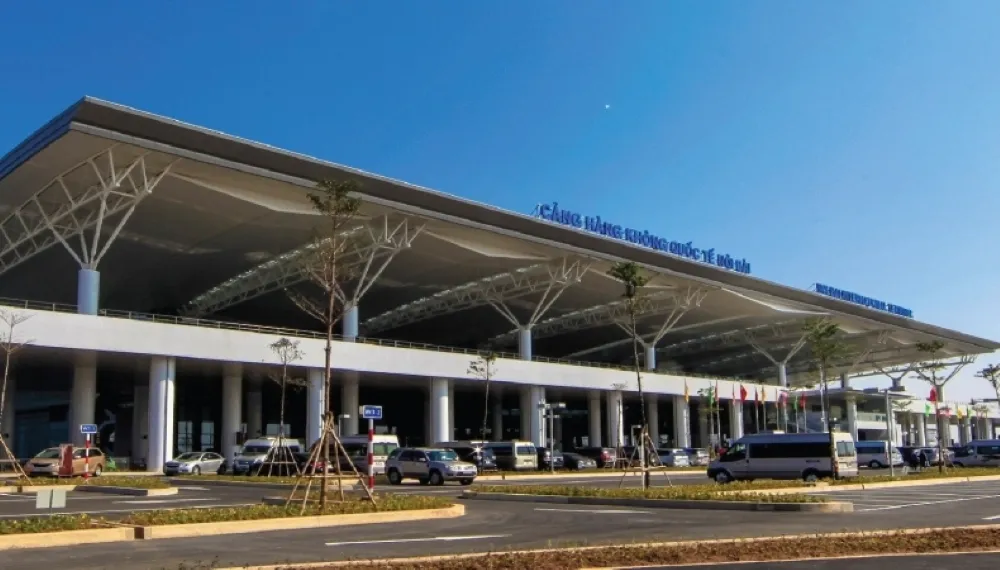
Noi Bai International Airport (HAN) is Hanoi’s main airport, welcoming both international and domestic flights. It’s located about 40–50 minutes from the city centre, and there are several easy ways to get into town:
Taxi or ride-hailing (Grab): Convenient and reliable. A ride to the Old Quarter typically costs between 250,000–350,000 VND (around $10–14 USD).
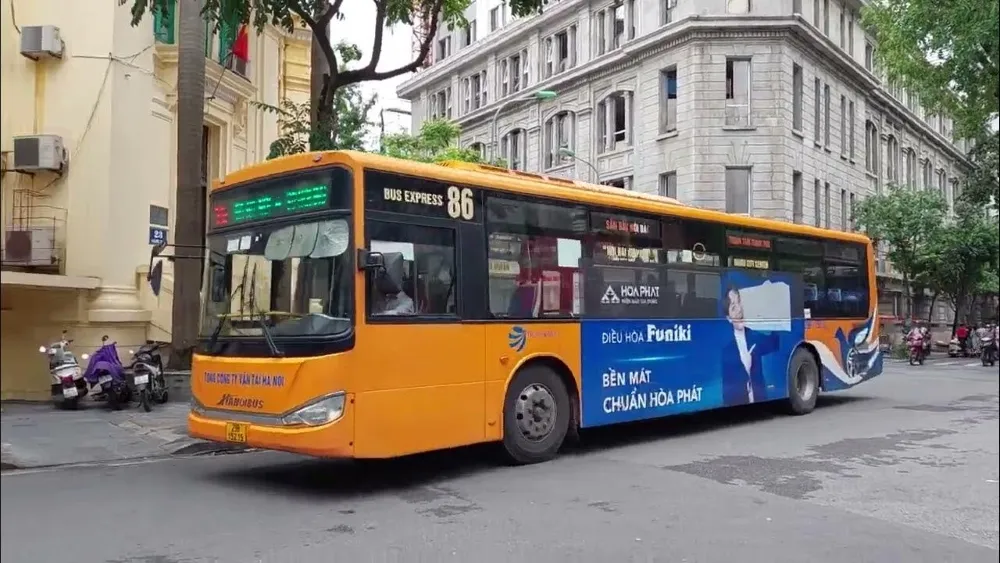
Airport buses and shuttles: A good low-cost option. Bus 86 runs directly from the airport to central Hanoi, including stops in the Old Quarter, Hanoi Station, Hoan Kiem Lake. It’s air-conditioned and has space for luggage. Tickets cost about 45,000 VND (~$1.80 USD).
Private transfers: Great if you're travelling with kids, arriving late, or want door-to-door service. These can be arranged via your hotel or a local tour operator. Prices usually start from 350,000 VND (~$14 USD) and up, depending on the vehicle type and provider.
If you're coming from elsewhere in Vietnam, you can also reach Hanoi by:
Train: A scenic (but slow) way to travel. Trains arrive at Hanoi Railway Station - one of the largest and oldest train stations in Vietnam.
SE1 – SE8 train lines connect Hue to Hanoi (approximately 13–14 hours), Da Nang to Hanoi (approximately 15–16 hours). The ticket price is around 700,000 – 1,200,000 VND (approx. ~$29 – $50 USD), depending on seat class.
For travelers who enjoy long journeys and scenic views across the country, trains like SE3 and SE1 run directly from Ho Chi Minh City (HCMC) to Hanoi (31–35 hours). Ticket prices are around 1,000,000 – 1,300,000 VND (~$42 – $54 USD) for air-conditioned soft seats, and 1,500,000 – 2,000,000 VND (~$63 – $83 USD) for air-conditioned 4-berth sleeper.
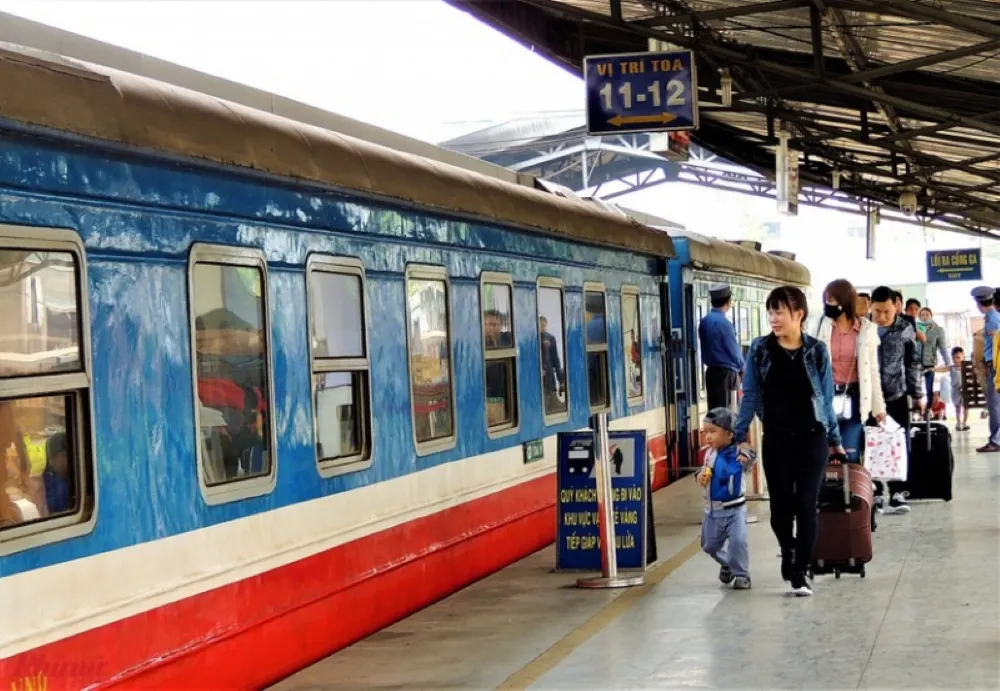
See more: Vietnam sleeper train: Things to know before your journey
Long-distance buses: Affordable and available from most major cities, though quality varies. Look for trusted operators like The Sinh Tourist or Sapa Express.
Domestic flights: Fast and often inexpensive. Vietnam Airlines, VietJet Air, and Bamboo Airways connect Hanoi with cities like Ho Chi Minh City, Da Nang, and Nha Trang,...
5. Top highlights in Hanoi
5.1. Hanoi temples and pagoda
Hanoi’s spiritual heritage is written into its temples and pagodas—some nestled between busy roads, others hidden in quiet corners, and a few standing proudly over lakes. These places are not just tourist stops; they are active spaces of worship and reflection.
Tran Quoc Pagoda
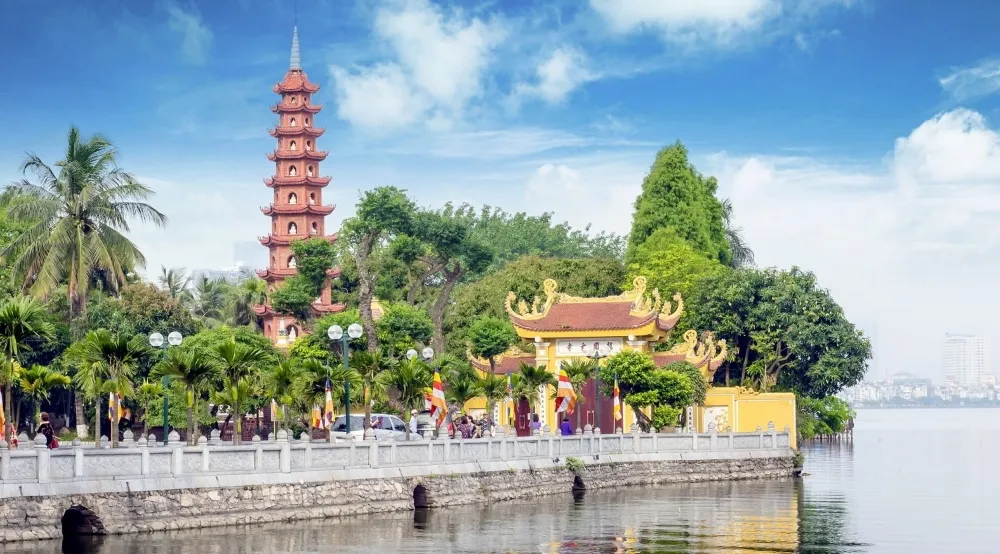
Dating back more than 1,400 years, Tran Quoc is considered Hanoi’s oldest pagoda. It sits on a small island just off the southeastern edge of West Lake, connected by a short causeway. The towering 11-tier stupa glows beautifully at sunset, while the peaceful garden and ancient bodhi tree (a gift from India) add to its sacred charm. It's a peaceful escape amid the city’s chaos.
Quan Thanh Temple
Located near Tran Quoc Pagoda, this 11th-century Taoist temple is dedicated to Tran Vu, the God of the North. Inside, you’ll find a massive bronze statue—over 3.5 metres tall—cast in 1677. This is one of the city’s Four Sacred Temples, once believed to protect Hanoi from evil spirits coming from different directions.
Ngoc Son Temple
Sitting on a small island in the centre of Hoan Kiem Lake, Ngoc Son Temple is one of Hanoi’s most visited landmarks. To get there, you’ll cross the famous red-painted Huc Bridge, which means “Morning Sunlight.” The temple itself honours national hero Tran Hung Dao, who repelled Mongol invasions in the 13th century. Inside, you’ll also find relics including a preserved giant turtle, believed to be linked to the legend of the Restored Sword, which gave the lake its name. Though small, this temple carries enormous cultural significance and is a beautiful blend of myth, history, and daily life.
Temple of Literature (Van Mieu)
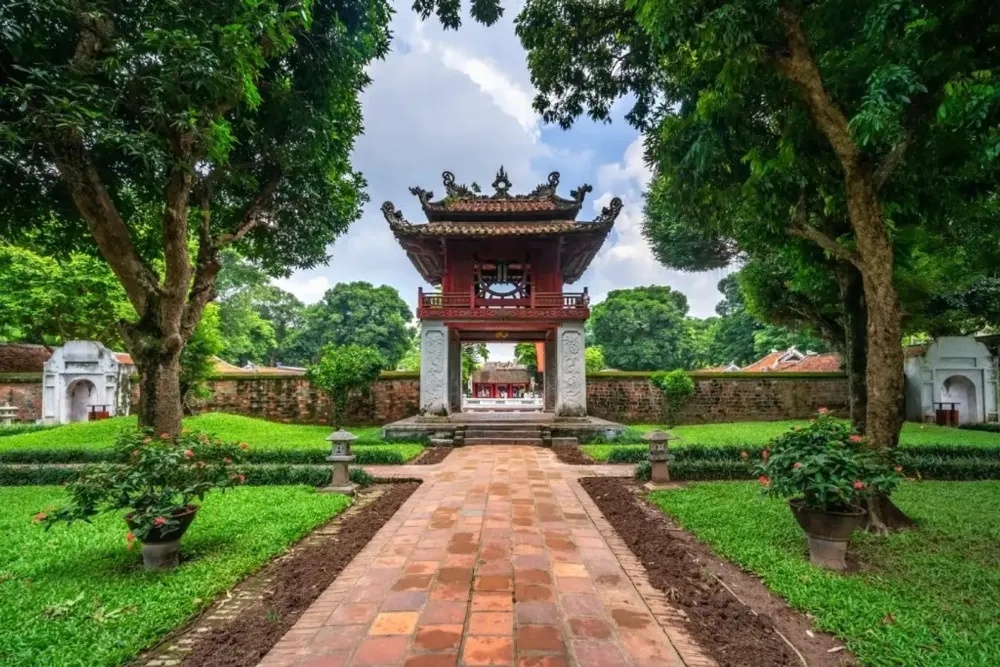
Van Mieu - Quoc Tu Giam complex is one of Hanoi’s most beautiful and meaningful landmarks, built in 1070. Originally dedicated to Confucius, it later became Vietnam’s first university, where the elite were trained for royal exams. The stone steles mounted on the backs of turtles (symbols of wisdom and longevity) list the names of successful scholars going back centuries. With its lotus ponds, ancient courtyards, and red-tiled roofs, it’s a peaceful spot full of history and symbolism.
Ha Pagoda
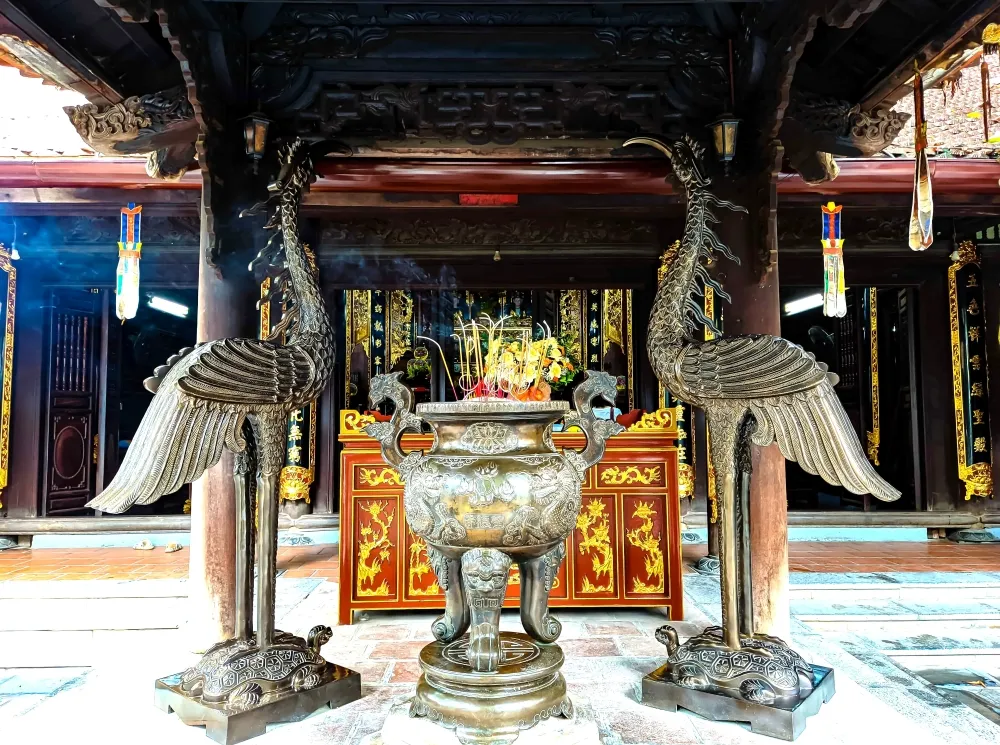
Though small and modest, Ha Pagoda has gained popularity among young locals who come to pray for love and romantic luck. It’s especially busy around Valentine’s Day and after Tet. If you're curious about local rituals and modern spiritual beliefs, this makes an interesting—and very Hanoi—stop.
Thay Pagoda & Tay Phuong Pagoda
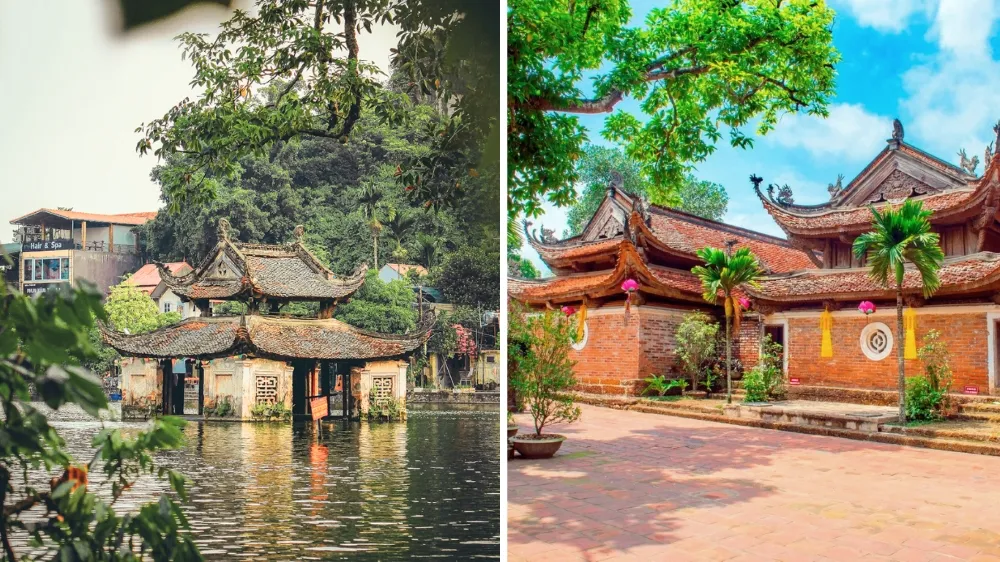
Located about 30km southwest of Hanoi, these two ancient pagodas offer a peaceful retreat into the countryside. Thay Pagoda sits at the base of Sai Son Mountain, overlooking a small lake. It’s associated with Tu Dao Hanh, a revered Buddhist monk, and features scenic bridges and traditional architecture. Tay Phuong Pagoda sits higher on a hill and is known for its collection of 18th-century wooden Buddha statues, beautifully carved and housed in a simple but atmospheric structure. Be ready for a steep stair climb—but the serenity at the top is worth it.
Perfume Pagoda (Chua Huong)
A full-day trip from Hanoi, the Perfume Pagoda is more than just one temple—it’s a vast complex of shrines and pagodas spread throughout limestone mountains. Getting there is part of the experience: you’ll glide along the Yen River in a rowing boat, then hike (or take a cable car) up to the Huong Tich Cave, the spiritual heart of the pilgrimage. This site is especially popular during the Perfume Pagoda Festival from January to March, attracting thousands of worshippers.
Nom Pagoda

Tucked away about an hour from central Hanoi, Nom Pagoda is rarely busy, making it ideal for those seeking off-the-beaten-path spiritual sites. With red-brick walls, weathered statues, and lotus ponds, it feels frozen in time—a rare example of preserved traditional architecture that hasn’t been heavily restored.
5.2. Hanoi’s Museums
Hanoi’s museums offer far more than static exhibits—they help you understand the layers of history, culture, conflict, and resilience that define the Vietnamese identity. Whether you’re into ancient artefacts, wartime history, or contemporary art, there’s a museum here to deepen your appreciation of the city and its people.
Ho Chi Minh Mausoleum
(Hung Vuong Street; summer (April-October): open 7:30 am - 10:30am; winter (November-March): open 8am - 11am; closed Mondays and Fridays)
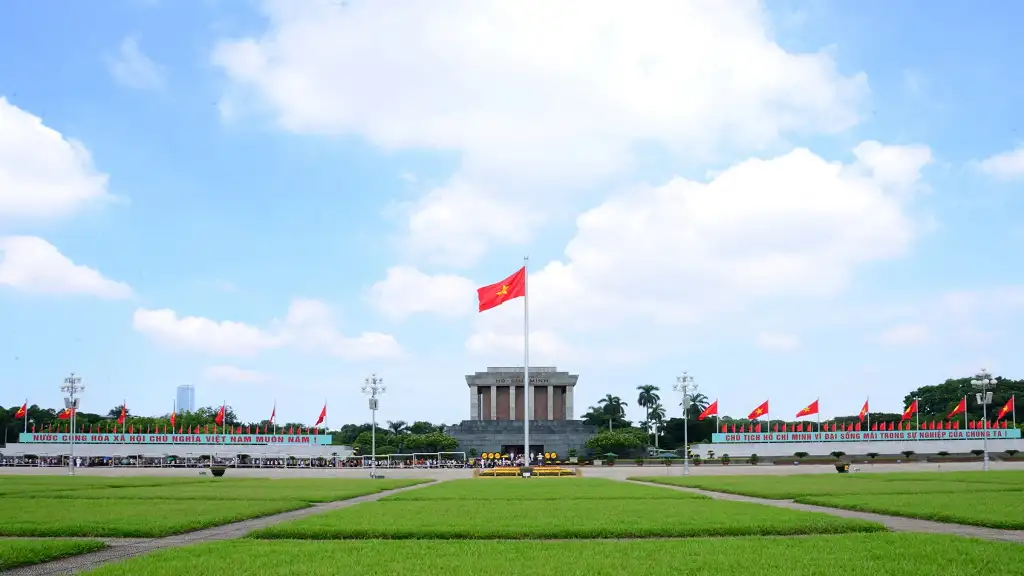
More than just a monument, Ho Chi Minh Mausoleum is a national symbol of reverence and respect. Inside lies the preserved body of Ho Chi Minh, the revolutionary leader who declared Vietnam’s independence in 1945. Visitors queue in silence as they pass through the cool, sombre interior—it's a powerful experience, regardless of politics.
Outside, the vast Ba Dinh Square is where Ho delivered his independence speech. Nearby, you can also visit the Presidential Palace, Ho Chi Minh’s Stilt House, and the One Pillar Pagoda, making it easy to turn this into a half-day exploration.
Vietnam Museum of Ethnology
(Nguyen Van Huyen Street; open: 8:30 AM - 5:30 PM daily; closed Mondays and Lunar New Year holidays)
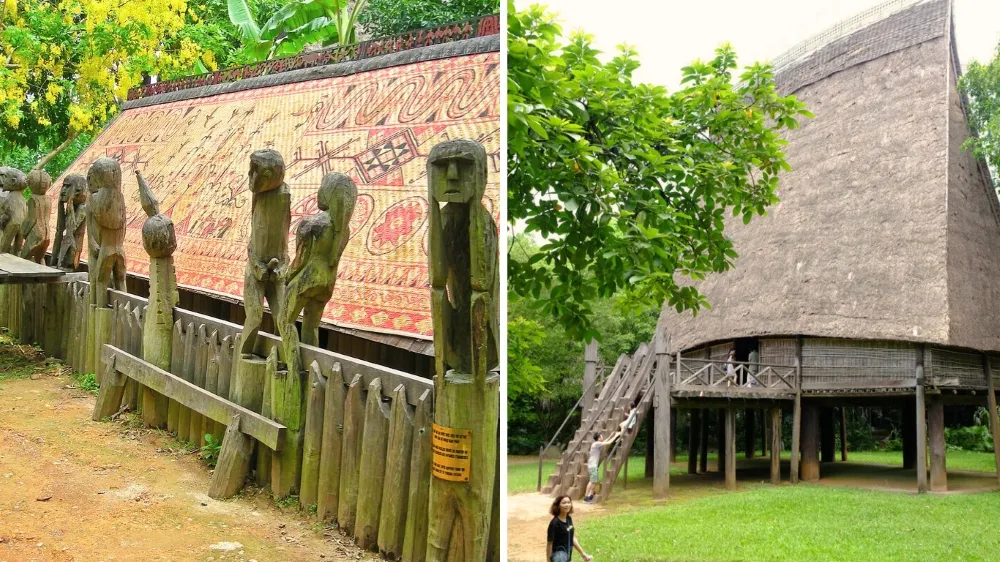
Located a short drive from the city centre, this museum offers a rich, hands-on insight into Vietnam’s 54 ethnic groups. The interior galleries showcase traditional costumes, tools, musical instruments, and household items. But the real highlight is outside—life-sized replicas of ethnic minority homes, including stilt houses and longhouses, spread across the garden. It’s especially great for families or anyone curious about Vietnam beyond Hanoi.
Vietnamese Women’s Museum
(36 Ly Thuong Kiet Street; open: 8am - 5pm daily)
One of Hanoi’s most engaging museums, this space highlights the role of women in Vietnamese society—from everyday family life to major historical events. Expect moving personal stories, striking photography, and exhibits on everything from matriarchal tribal customs to the contributions of women during wartime. It's modern, well-curated, and often leaves a lasting impression on visitors.
Vietnam Military History Museum
(Km 6+500 Thang Long Boulevard; open: 8am - 11:30am & 1:00pm - 4:30pm daily; closed Mondays and Fridays)
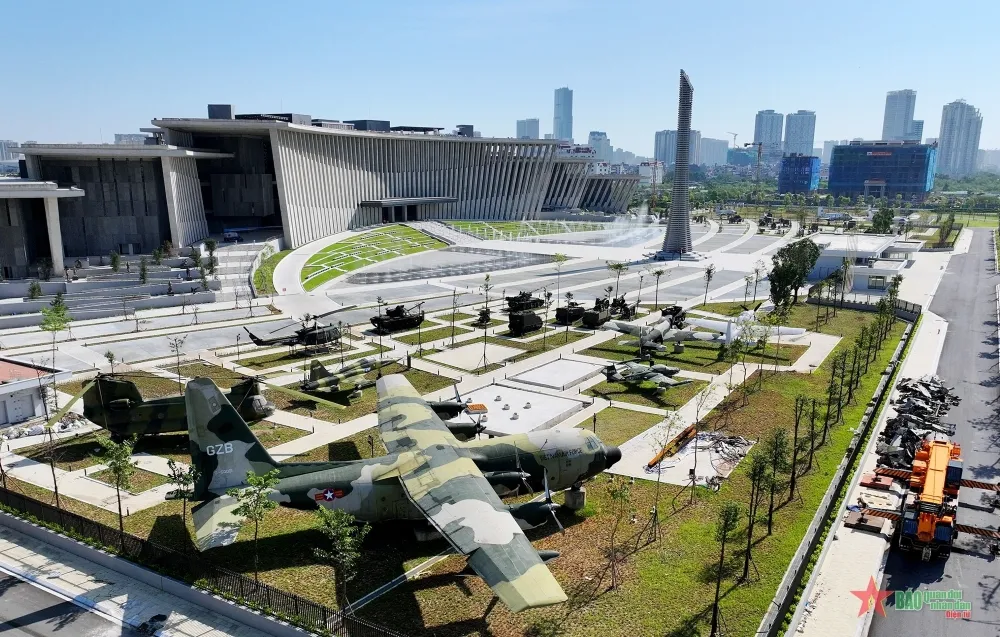
As of early November 2024, the Vietnam Military History Museum has relocated to a much larger and more modern complex at Km 6+500 Thang Long Boulevard. This extensively renovated museum offers a comprehensive Vietnamese perspective on centuries of conflict—from the resistance against Chinese rule to the French and American wars. Its vast new grounds feature impressive outdoor displays of large-scale military artifacts, including planes and tanks, while modern indoor exhibits use detailed maps, photos, and personal stories to trace Vietnam's wartime history. It's an impactful and insightful stop for understanding the nation's military heritage.
Vietnam National Museum of History
(1 Trang Tien & 216 Tran Quang Khai; open 8am–12pm & 1:30pm–5pm; closed Mondays)

Housed in a beautiful French colonial building designed by Ernest Hébrard, this museum mixes Chinese and European architectural elements, making it a treat before you even step inside. The collections cover a vast timeline—from Dong Son bronze drums (3rd century BC) to artefacts from the Champa and Khmer kingdoms, to Vietnamese royal jewellery and Communist-era exhibits. It’s often quieter than other museums, making it a rewarding stop for history lovers.
Vietnam National Fine Arts Museum
(66 Nguyen Thai Hoc Street, open 8:30am- 5:00pm daily; closed Mondays)
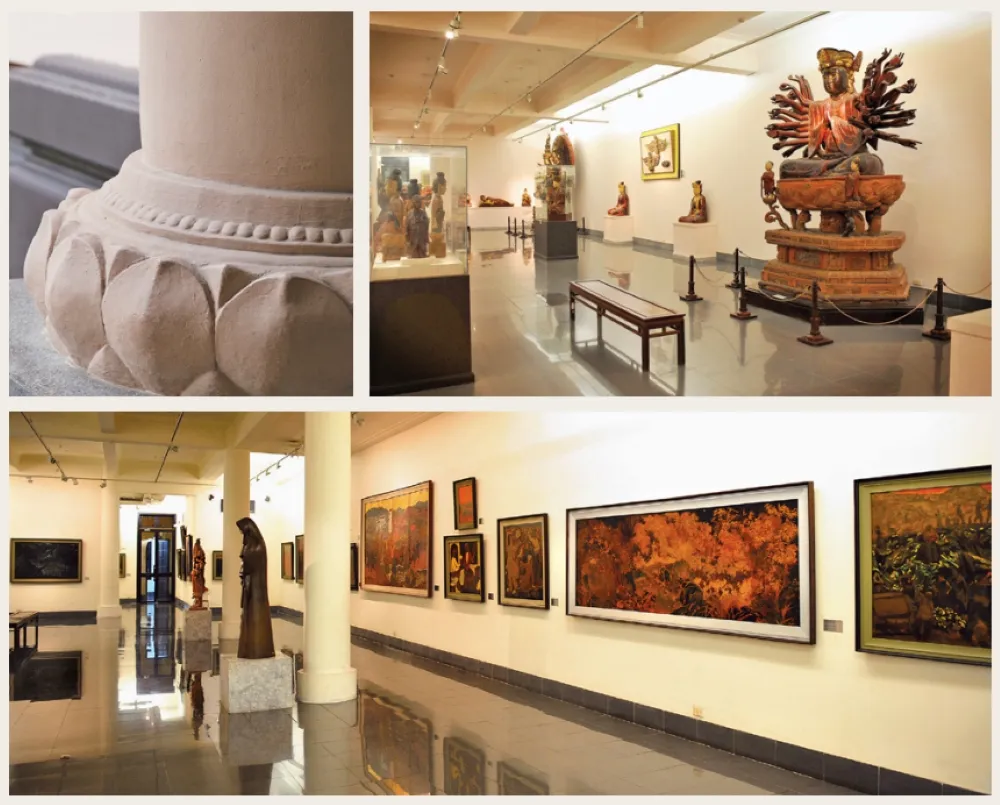
Just across from the Temple of Literature, this museum showcases the evolution of Vietnamese art—from Buddhist carvings and lacquerware to 20th-century war paintings and contemporary works. It's compact, easy to explore in an hour or two, and offers a nice break from more intense historical sites.
5.3. Hanoi Markets
To really feel the pulse of Hanoi, head to its markets. They’re loud, colourful, chaotic—and full of life. From the scent of street food to the chatter of vendors, these spaces reflect the city’s energy and the rhythms of daily life. You don’t need to buy anything (though you probably will)—just walking through is a cultural experience.
Dong Xuan Market

Located in the heart of the Old Quarter, Dong Xuan Market is Hanoi’s largest and busiest indoor market. Housed in a Soviet-style concrete building, it sells just about everything—clothes, fabrics, electronics, souvenirs, household goods, and food.
While the ground floor is where tourists tend to browse, head upstairs or out back for a more local experience. It’s not the place for peaceful browsing, but it’s perfect if you want to see how Hanoi shops in real life.
Quang Ba Flower Market
This vibrant wholesale flower market operates before dawn and hits its peak between 2am and 5am. Buckets of fresh roses, lilies, orchids, and chrysanthemums fill the alleys, as vendors sell by torchlight and delivery bikes zip in and out.
Located near West Lake, Quang Ba is where Hanoi’s florists and flower sellers stock up each morning. If you’re a photographer or just want to see something truly local, it’s worth the early wake-up.
Long Bien Market
Tucked beneath Long Bien Bridge, this sprawling night market kicks off after midnight and stays alive until dawn. It’s one of the city’s biggest wholesale food markets, with endless crates of fruits, vegetables, seafood, and meat trucked in from across northern Vietnam.
This is raw, unfiltered Hanoi. There are no tourist stalls, no signs in English, and little polish—but it offers an authentic slice of city life that most visitors never see. Wear closed shoes and go with curiosity.
- Hang Be Market
5.4. Hanoi’s Iconic Lakes
Lakes are more than just scenic spots in Hanoi—they’re the city’s lungs, playgrounds, and spiritual centres. Locals gather around them to exercise, relax, socialise, or simply slow down. For visitors, they offer a welcome pause from the rush of traffic and a chance to see the city at a gentler pace.
Hoan Kiem Lake (Lake of the Restored Sword)
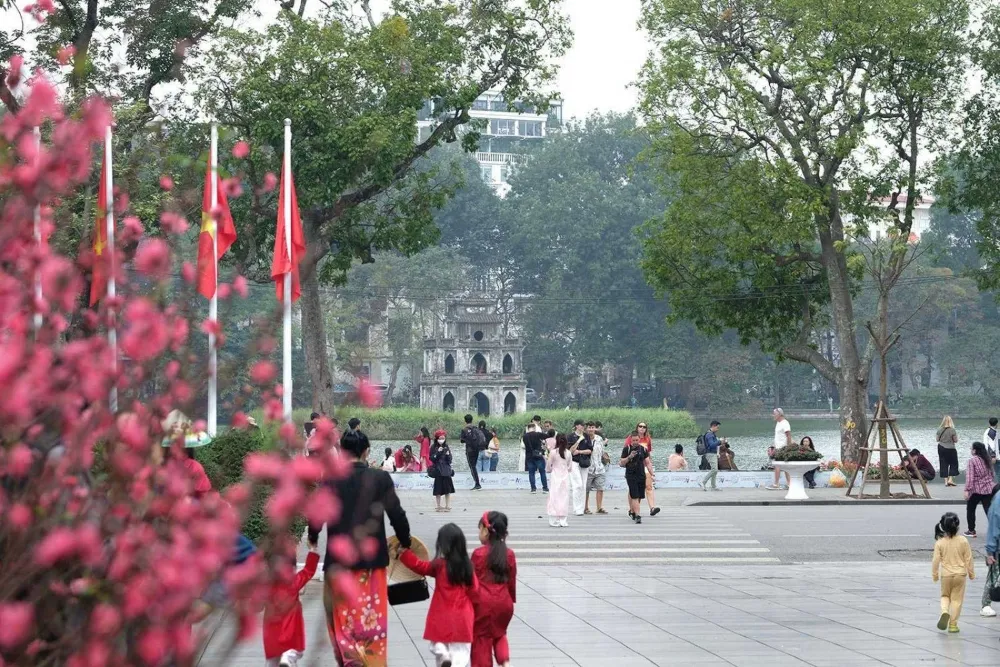
Located in the centre of the city, Hoan Kiem Lake is the symbolic heart of Hanoi. It’s not only a scenic landmark but also the setting of one of Vietnam’s most enduring legends—where Emperor Le Loi returned a divine sword to a golden turtle, giving the lake its name.
In the early morning, locals gather here to practise tai chi, dance, jog, or just sip tea. Later in the day, it becomes a peaceful escape amid the Old Quarter’s buzz. The red Huc Bridge and island Turtle Tower make it one of the most photogenic spots in Hanoi, especially at sunrise or sunset.
It’s also ideal for a slow walk, people-watching, or simply soaking in the atmosphere. On weekends, nearby streets close to traffic, turning the area into a lively pedestrian zone with performances, food stalls, and music.
West Lake (Ho Tay)
![]()
The largest lake in Hanoi, West Lake offers a completely different vibe—expansive, quiet, and slightly more refined. It’s popular with both locals and expats for jogging, cycling, or just sipping coffee with a lakeside view.
Unlike the compact loop around Hoan Kiem, West Lake stretches across a 17km perimeter, lined with leafy streets, elegant villas, and cafés perfect for catching the sunset. Early mornings are peaceful, with fishermen casting lines and locals walking dogs. By late afternoon, the cafés fill up and the breeze off the water brings welcome relief from the city heat.
While temples and pagodas dot its edges, most visitors come here for the tranquillity, space, and slower pace—a very different side of Hanoi.
5.5. Hanoi’s architecture
Hanoi is a living museum of architecture—its streets layered with styles shaped by royalty, colonists, communists, and modern developers. Every corner reveals a different chapter in the city’s story, from faded imperial walls to narrow merchant homes and grand French villas. The contrast isn’t curated—it’s simply how the city evolved.
Imperial Citadel of Thang Long
(19C Hoang Dieu street; open 8am-5pm daily)
A UNESCO World Heritage Site, the Imperial Citadel was once the heart of Vietnamese power, serving as the capital’s political centre for over a thousand years. The site includes restored gates, a royal dragon staircase, ancient roads, and even wartime bunkers used during the American War. Ongoing excavations continue to reveal layers of history beneath modern Hanoi.
Long Bien Bridge
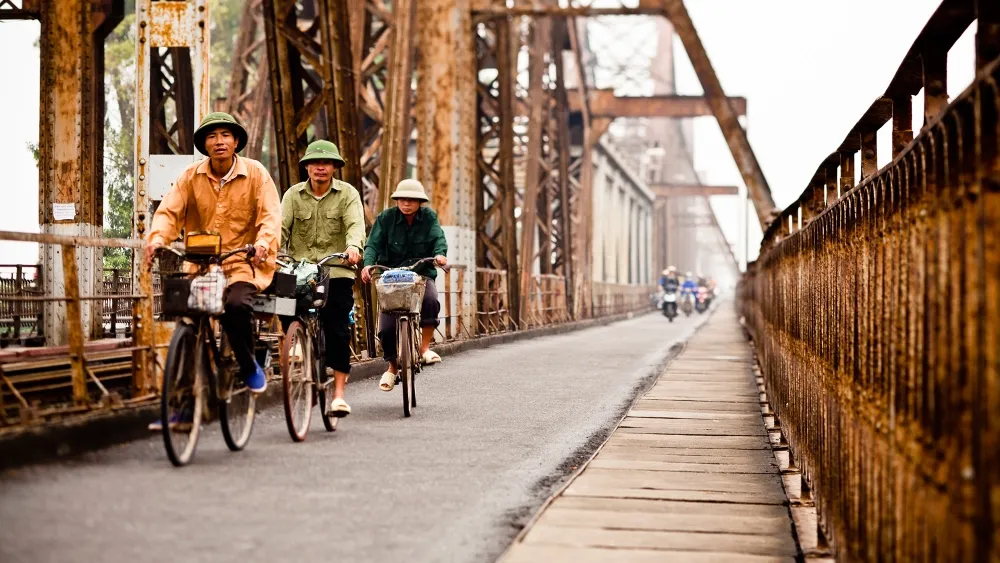
Completed in 1902 and designed by Gustave Eiffel, this rusted iron bridge still stretches proudly across the Red River. It was a strategic target during the American War and bombed multiple times, but the Vietnamese rebuilt it after every attack.
Today, Long Bien Bridge is a popular spot for walks or cycling—especially at sunrise or sunset—with sweeping views of riverside farms and banana island below. It’s one of Hanoi’s most evocative landmarks, symbolising both endurance and everyday life.
Hanoi French Quarter
The French Quarter is spread across areas of west and south of Hoan Kiem Lake, reflecting a different side of the colonial era’s architectural legacy
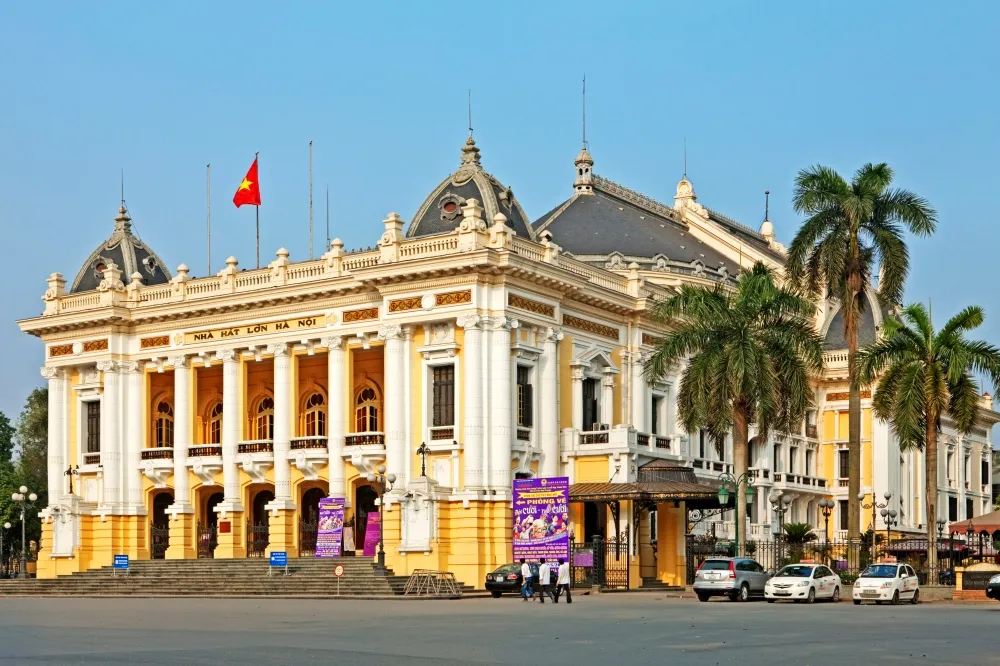
To the south of Hoan Kiem Lake, you’ll find wide boulevards lined with yellow-painted villas, grand government buildings, and cultural institutions. Notable landmarks include the Hanoi Opera House, inspired by Paris’s Palais Garnier, and the historic Sofitel Legend Metropole Hotel, which has hosted everyone from Somerset Maugham to Barack Obama.
To the west of Hoan Kiem Lake, around the Imperial Citadel, the French Quarter feels more residential and stately. Streets like Phan Dinh Phung, Hung Vuong, Hoang Dieu, Dien Bien Phu, Chu Van An, and Tran Phu are shaded by dracontomelon trees and lined with colonial villas and embassies. This area is perfect for a peaceful morning jeep tour and a chance to see how French-era design has been adapted for Vietnamese life.
Hanoi Old Quarter (Architectural character)
While known for its energy and street life, the Old Quarter is also a showcase of Vietnamese urban ingenuity. The signature style here is the “tube house”—narrow and tall, sometimes just 2–3 metres wide, but stretching deep into the block. These homes evolved due to historical tax policies based on street frontage, and many are still lived in today.
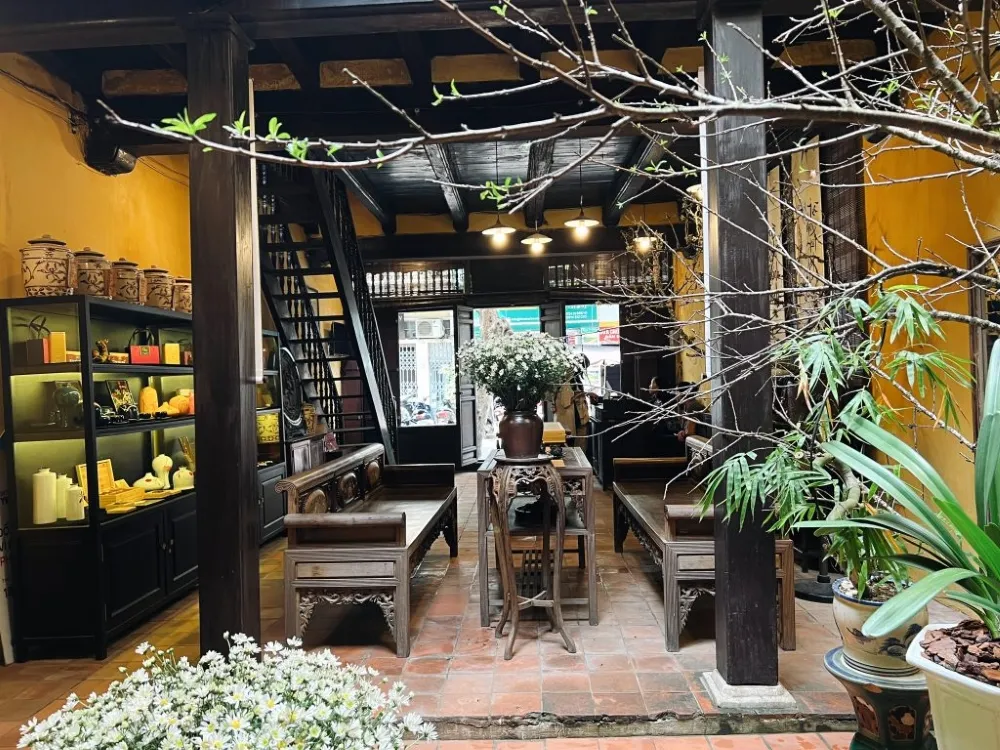
To really understand the design and structure of these ancient townhouses, visit the Ancient House at 87 Ma May Street, one of the few restored homes open to the public. The house is a brilliant example of traditional layout and craftsmanship, with its wooden beams, inner courtyards, and multi-use spaces reflecting how merchants once lived and worked under one roof.
Hanoi’s architectural story is a patchwork of practicality and history—tube houses wedged between cafés, colonial villas repurposed as ministries, and ancient citadels standing quietly in a city of scooters and signage.
5.6. Handicraft villages and rural villages
Just beyond Hanoi’s city limits, a world of traditional craftsmanship, slow-lane living, and cultural heritage still thrives. These villages offer a window into the everyday artistry of northern Vietnam—where incense sticks dry in pink bundles under the sun, silk threads stretch across wooden looms, and locals greet you with quiet curiosity.
They’re perfect for half-day or full-day trips, especially if you want to balance Hanoi’s buzz with something more grounded and authentic.
Bat Trang Ceramic Village
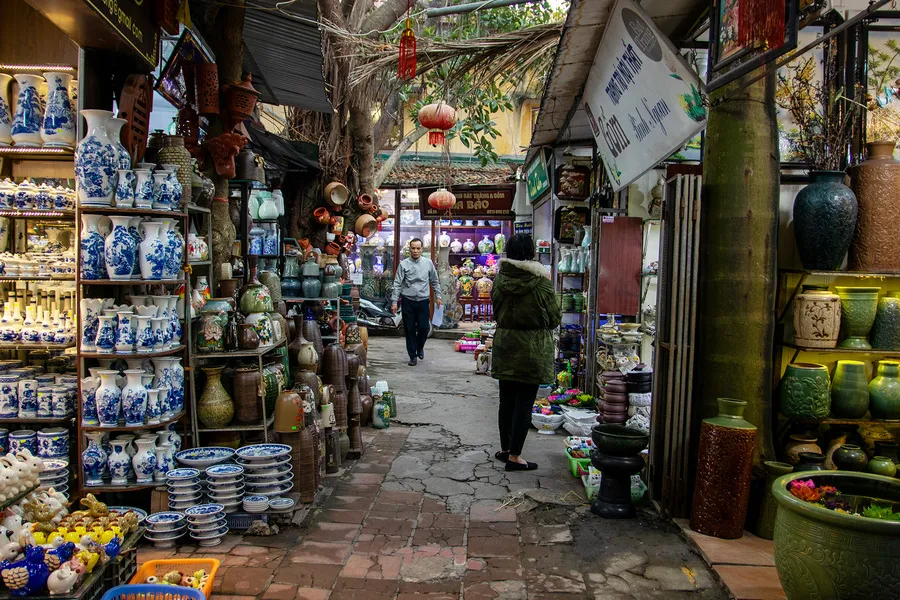
Located about 13km southeast of Hanoi, Bat Trang is the country’s most famous ceramic village. For over 700 years, artisans here have crafted everything from delicate tea sets to massive hand-painted vases.
You can visit family-run workshops, try your hand at wheel-throwing, and buy unique, hand-glazed souvenirs. It’s ideal for families, creatives, or anyone interested in Vietnamese craftsmanship.
Van Phuc Silk Village
Roughly 10km southwest of Hanoi, Van Phuc has long been famous for producing some of Vietnam’s finest silk. Once filled with the rhythmic clack of traditional handlooms, the village is now more often filled with the hum of weaving machines, as modern methods gradually replace the old ways.
Even so, Van Phuc remains a worthwhile stop. You can still find high-quality silk products, including scarves, ties, and fabric sold by the metre. Some workshops continue to demonstrate traditional techniques, giving visitors a glimpse into the past alongside today’s faster-paced production.
Quang Phu Cau Incense Village

If you’ve ever seen those mesmerising photos of hot pink incense sticks fanned out in circular clusters, they were likely taken here. Quang Phu Cau, about 35km from Hanoi, specialises in incense production for religious and cultural ceremonies.
The best time to visit is midday, when incense is drying under full sun—creating stunning visual displays for photographers and culture lovers alike.
Duong Lam Ancient Village

Around 1.5 hours from Hanoi, Duong Lam is one of the best-preserved traditional villages in northern Vietnam. Its laterite stone houses, ancient wells, and narrow alleys give a glimpse into rural life from centuries past.
It’s also the birthplace of two Vietnamese kings, making it historically important as well. Rent a bicycle to explore at your own pace, or join a walking tour with a local guide.
Nom Village
Nom Village feels like a step back in time. Red-brick houses, lotus ponds, and a slow, almost timeless pace of life make this an excellent alternative to more commercialised destinations. Nearby, Nom Pagoda adds a spiritual touch to your visit.
Dong Ngac Village
One of the few villages within Hanoi’s city limits to still maintain its family ancestral houses and village gate. Dong Ngac was historically home to many mandarins and scholars. You can explore its old homes, learn about traditional clan systems, and even join in a local cooking class or market tour.
Ha Thai Lacquerware Village
Ha Thai Village is known for producing high-quality lacquerware—a craft that requires great patience and attention to detail. From decorative panels to trays and vases, each piece takes days or even weeks to complete. A good stop for travellers interested in fine art and design.
Chuong Village
Vietnam’s conical hat capital, Chuong Village continues to hand-make the iconic non la. Located to the south of Hanoi, it’s a peaceful visit where you can watch locals split bamboo, stretch palm leaves, and stitch together the traditional headwear seen across the country.
Vac Village
A lesser-known village where artisans craft wooden birds used in temple decorations and festivals. While it’s not as touristy or polished as other villages, it’s a good choice for travellers seeking something truly off the beaten path.
6. Best local Hanoi tours, activities and experiences
Experiencing Hanoi up close—through its flavours, backstreets, and conversations with locals—is something else entirely. These activities and guided experiences help you connect with the city on a deeper level, whether through food, culture, or hidden corners you might otherwise miss.
6.1. Watching water puppet show
(Thang Long Water Puppet Theatre, 57B Dinh Tien Hoang)
No trip to Hanoi is complete without experiencing a water puppet show—a uniquely Vietnamese art form dating back to the 11th century. Originally performed in Red River Delta’s flooded rice paddies, Water Puppet Shows now take place in specially designed theatres where wooden puppets glide across water, manipulated by puppeteers standing behind a screen.
At Thang Long Water Puppet Theatre, performances are accompanied by a live traditional orchestra, with instruments like the monochord and drums setting the pace. Stories often draw from folklore, rural life, and heroic legends. Shows last about 45 minutes and run multiple times daily. It’s family-friendly, visually engaging, and a cultural must for any first-time visitor.
6.2. Enjoying Ca Tru performances (Ceremonial singing)
If you are fond of traditional music, don't miss Ca tru - a form of ancient Vietnamese chamber music that combines poetry, percussion, and hauntingly delicate vocals. Recognised by UNESCO as Intangible Cultural Heritage, this art form once entertained royal courts and scholars.
Performed in intimate settings like communal houses or cultural centres, a traditional ca trù trio includes a female singer, a two-stringed lute player, and a wooden box percussionist who uses rhythmic beats to respond to the singer’s phrasing.
Though the lyrics are in Vietnamese, the emotion transcends language. A live ca tru show is gentle, hypnotic, and deeply reflective of Vietnam’s scholarly past.
6.3. Hanoi cooking classes
Hanoi’s food is rich, balanced, and packed with herbs, but understanding it goes far beyond reading a recipe. Most classes begin with a guided walk through Hanoi's local market, where you’ll learn how to choose fresh herbs, understand staple sauces, and navigate the stalls like a local. Back in the kitchen, you’ll prepare iconic dishes like: Nem ran (crispy spring rolls), Pho bo (beef noodle soup); Bun cha (grilled pork with noodles); Che (sweet dessert soup), etc… Classes usually end with a shared meal, making this a satisfying and insightful half-day experience.
6.4. Local craft workshops
Hanoi’s handmade traditions are still very much alive—especially in small creative workshops where locals pass on skills the modern world is slowly forgetting. If you travel Vietnam with your kid, why not try a hand on making a paper mask or toy figurine.
Paper mask making: These hand-painted masks were once worn during the Mid-Autumn Festival, symbolising characters from folk tales and legends. In the workshop, you’ll learn how they’re shaped from papier-mâché and painted in bold colours and expressive designs.
To he (toy figurine) making: Using colourful rice dough, artisans mould miniature animals, flowers, or characters on bamboo sticks. Originally made for children at temple fairs, to he is both playful and artistic. You’ll shape your own and watch skilled hands create intricate designs in minutes.
These workshops are interactive, creative, and give you a deeper connection to Hanoi’s cultural heartbeat.
See more: Traditional Vietnamese toys: Nostalgic childhood for every kid
6.5. Cyclo or walking tours of the Old Quarter
The Old Quarter is chaotic at first glance—but on foot or by cyclo, its rhythm starts to make sense.

Guided tours take you through the 36 guild streets, each named after a craft once sold there—like Silver Street, Paper Street, or Herbal Medicine Street. You’ll learn about the tube houses and their clever vertical design, street shrines tucked between homes, the evolution of Hanoi’s street food culture and daily rituals of local vendors and families. It’s the best way to slow down and decode the everyday details that make this area so fascinating.
6.6. Street food tours
In Hanoi, food lives on the street—and some of the best meals come on plastic stools, served from metal carts or tiny storefronts. A street food tour introduces you to dishes you might never find on your own. You’ll likely try bun cha, banh mi, banh cuon and egg coffee. Most guides are locals who share not only where to eat, but how and why these foods matter—turning a casual meal into a cultural discovery.
>> See more: 20 Hanoi restaurants near Hoan Kiem Lake & the Old Quarter
6.7. Jeep Tours
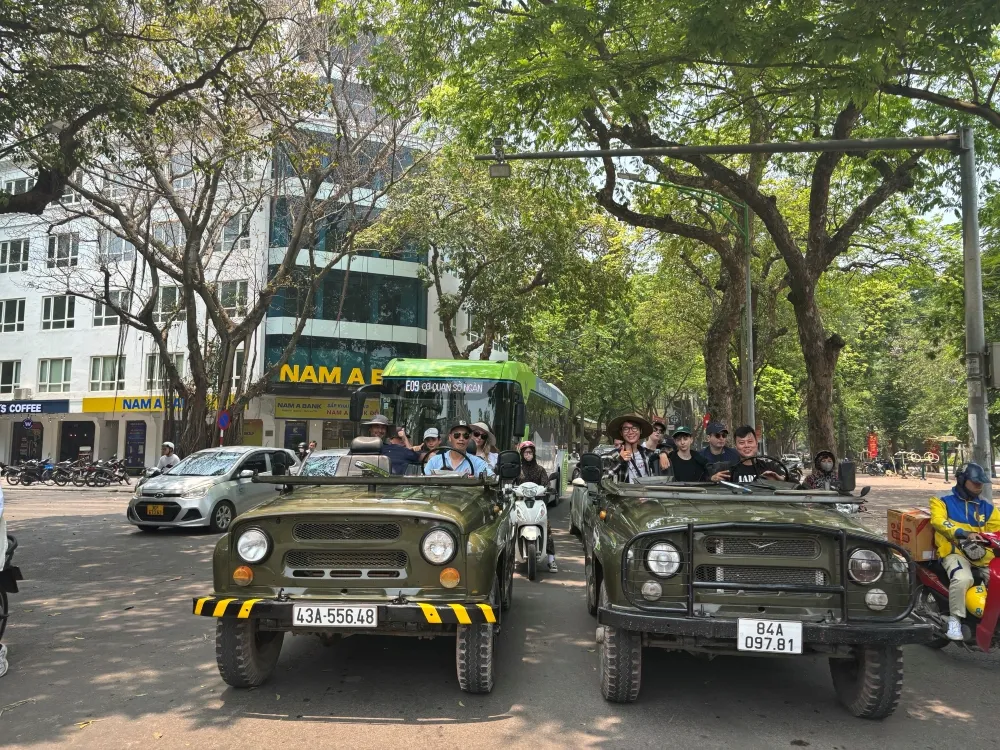
If you want to cover more ground without feeling rushed, a vintage military jeep tour is more than a fantastic option. These tours are typically led by knowledgeable local guides and offer a mix of:
Hanoi’s major landmarks (Ho Chi Minh Mausoleum, Temple of Literature)
Hidden alleyways, train tracks, and post-war buildings
A glimpse into Hanoi’s wartime past and rapid urban changes
Sometimes the discovery of local delicacies
With the open roof and rugged design, the ride is part of the fun. It’s immersive, photogenic, and lets you feel the breeze as you weave through traffic like a local.
Book Hanoi Jeep tour: culture & culinary
6.8. Bike Tours
For travellers who like to stay active, biking offers a more immersive pace. You can rent a bicycle for yourself or join in a guided tour. Tours often explore:
West Lake and its breezy shoreline, temples, and cafés
Hanoi’s Red River countryside, where you’ll pedal through farmland, banana island and visit local homes
Historic sites tucked away from the main roads, with plenty of photo stops
Cycling with a local guide helps you connect the dots between urban Hanoi and rural traditions, often in just a few hours.
6.9. Hop-on Hop-off Bus tours
Ideal for orientation or a flexible sightseeing day, hop-on hop-off buses loop through Hanoi’s key sights, including:
Hoan Kiem Lake
Hanoi Opera House
French Quarter and Presidential Palace area
Ho Chi Minh Mausoleum
Temple of Literature
You’ll get pre-recorded commentary in multiple languages, and the freedom to explore at your own pace. It’s especially useful for families, seniors, or anyone who wants a comfortable overview before diving deeper.
See more: Top Hanoi Hotels in the City Center 2025 - 2026
7. What to eat and drink in Hanoi
If there’s one thing you’ll remember about Hanoi, it’s the food. This city doesn’t just serve meals—it serves culture. Recipes are passed down like family heirlooms, and the streets double as open-air kitchens. From noodle soups eaten on tiny plastic stools to delicacies wrapped in banana leaves, eating in Hanoi is an adventure best enjoyed with your senses wide open.
I would like to suggest these must-try dishes and local specialties that define Hanoi’s culinary identity.
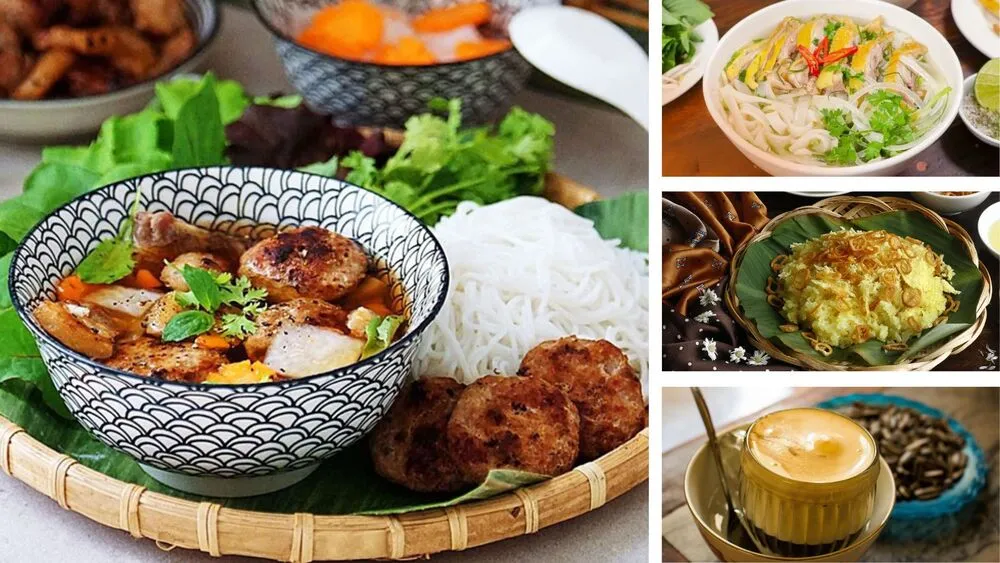
#1 Pho
Vietnam’s most famous dish, pho originated in the north, and Hanoi is where you’ll find the most traditional version. It’s a clear beef or chicken broth, simmered for hours with bones and spices, served with flat rice noodles, fresh herbs, and thinly sliced meat. Pho bo (beef noodle soup) is the classic choice. Pho ga (chicken noodle soup) is lighter but just as comforting. Look for small, no-frills spots packed with locals early in the morning—that’s where the best bowls usually are.
See more: 10 Restaurants to savor the best Pho in Hanoi
#2 Bun cha
This is Hanoi’s lunchtime superstar—chargrilled pork served in a bowl of fish sauce-based broth, alongside a plate of cold vermicelli noodles, fresh herbs, and crispy spring rolls. You dip, mix, and slurp. It’s the dish Barack Obama famously ate with Anthony Bourdain in Hanoi. Though Bun Cha is best enjoyed outdoors, with smoke from the grill rising into the street, you still find many good Hanoi’s restaurants serving it.
See more: Vietnam's iconic noodle dishes
#3 Cha ca
A true Hanoian specialty, chả cá is turmeric-marinated fish fried tableside in a sizzling pan with dill and spring onions, served with vermicelli noodles, peanuts, and dipping sauce. The most iconic place to try it is Cha Ca La Vong, a restaurant so closely tied to the dish, the street it’s on was renamed after it. Expect a full sensory experience—sounds, smells, and flavours collide at your table.
See more: The best Cha Ca Hanoi you have ever tasted
#4 Banh cuon
Banh Cuon is usually a breakfast or light snack option.These delicate steamed rice rolls are filled with minced pork and wood-ear mushrooms, topped with fried shallots, and served with a warm dipping sauce and slices of Vietnamese sausage. Watch them made fresh to order—a ladle of batter, a steam tray, and expert hands.
See more: Top 10 dishes for Vietnamese breakfast
#5 Xoi (Sticky rice dishes)
A staple comfort food, xôi is sticky rice topped with all kinds of savoury or sweet ingredients. It’s hearty, filling, and often eaten on the go. Try xoi xeo - yellow sticky rice with mung bean paste, fried shallots, and sometimes chicken or pork.
See more: Explore the delicious world of Vietnamese sticky rice
#6 Banh mi
Though more associated with southern Vietnam - Banh Mi Saigon, Hanoi has its own take on the iconic Vietnamese baguette sandwich—usually simpler, with Vietnamese sausage, pâté, pickled vegetables, and chili sauce. Banh mi is crunchy on the outside, soft on the inside, and perfect for breakfast or a snack. You can find it available everywhere—from bicycles to shopfronts.
As a devoted Banh Mi lover, I'd like to share my absolute favorite spot in Hanoi. It's not the famous Banh Mi 25, but Banh Mi Long Hoi at 1 Hang Dau Street. Priced between 40,000 to 60,000 VND per loaf, it's definitely worth a try!
#7 Egg Coffee (Ca phe trung)
Invented in Hanoi, this unique drink is made by whisking egg yolk with sugar and condensed milk into a rich, frothy cream, then poured over strong Vietnamese coffee. It is warm, sweet, and almost dessert-like. Try it at Giang Cafe, where the recipe was first created in the 1940s.
See more: Top 5 cafés that serve the best egg coffee
#8 Desserts and sweet treats
Hanoians love balance in their food—even desserts. That means sweets that are not too sugary, often combining rich, chewy, and refreshing textures. Whether you’re cooling off after a street food feast or curious about what locals enjoy in the afternoons, here are a few treats worth trying:
Che: A broad category of sweet soups made with beans, jelly, coconut milk, and fruit. Served hot or cold, depending on the season.
Kem xoi: A playful combo of sticky rice and scoops of ice cream—warm and cold in one bite.
Banh ran: Deep-fried glutinous rice balls filled with sweet mung bean paste, crispy outside and chewy inside.
Sua chua nep cam: Yogurt with fermented black sticky rice—creamy, tangy, and surprisingly addictive.
Hoa qua dam: Mixed fresh fruit over crushed ice, sometimes topped with condensed milk or yogurt. Hanoi’s answer to a fruit parfait.
#9 Bia Hoi
You can’t talk about Hanoi’s food scene without mentioning bia hoi—Vietnam’s iconic fresh draught beer, brewed daily and delivered in metal kegs to corner bars across the city. Light, and crisp, it’s more about the atmosphere than the alcohol.
Hanoians gather around low tables on the pavement, clinking glasses and chatting well into the evening. You’ll often find grilled snacks or peanuts served on the side, and the vibe is loud, casual, and welcoming to locals and tourists alike.
Head to Bia Hoi Junction at the corner of Ta Hien and Luong Ngoc Quyen streets in the Old Quarter for the liveliest scene. Or try a quieter spot for a more local experience—bia hơi is served all over the city, from alleys to roadside stalls.
See more: The city's quintessential street beer culture
8. Trip Ideas - Hanoi Itinerary in 1, 2, 3 days
Hanoi in half a day
A half-day tour in Hanoi is ideal for travellers who have just arrived in Hanoi and want to ease into the city without rushing.
If you’ve just landed or arrived after a long journey, you might not be ready to dive straight into Hanoi’s full intensity. This half-day itinerary is designed to help you slowly get acquainted with the city’s rhythm—feel the pace of daily life, savour your first local meal, and take in the atmosphere. It’s all about gentle discovery: light walking, scenic views, and a first taste of the capital’s history and cuisine.
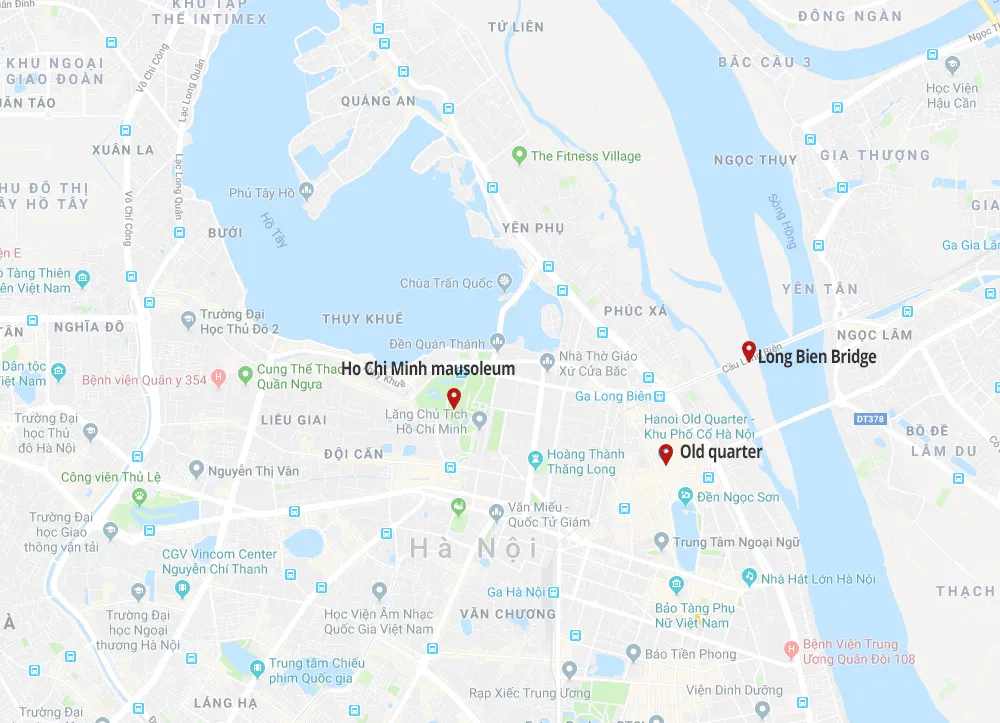
Morning or afternoon itinerary:
Start to visit Ho Chi Minh Mausoleum complex for a peaceful start
Walk around Hoan Kiem Lake and visit Ngoc Son Temple
Explore the Old Quarter on foot or by cyclo—see traditional tube houses, local markets, and shopfront shrines.
Stop for egg coffee at Giang Cafe or Cafe Pho Co.
Wrap up with a water puppet show at Thang Long Theatre (if timing works).
Customize Your Hanoi Experience
History theme:
For those who want to begin their Vietnam journey with historical grounding, let’s get a first look into Hanoi’s thousand-year past.
Start at the Temple of Literature, walk through peaceful courtyards, admire ancient stelae, and ease into the historical depth of the capital.
Head to the Imperial Citadel of Thang Long – A UNESCO-listed site with layers of Vietnamese military and royal history.
Wrap up with a traditional drink like a cup of lotus tea or Vietnamese drip coffee
Cuisine theme:
Taste your way through Hanoi’s most iconic dishes in the heart of the Old Quarter.
Join a street food tasting walk – Sample banh cuon, bun cha, banh mi and egg coffee in the Old Quarter. Even in just three hours, you can try 4–5 small dishes.
Optional stroll through Dong Xuan Market – Explore Hanoi’s largest market for snacks, tropical fruits, and food ingredients.
End with a sweet bite – Che (sweet soup) or a scoop of kem xoi (ice cream over sticky rice) at a local dessert shop.
Optional: If your half day is in the morning, enjoy a small bowl of pho for breakfast. If it’s in the evening, end with a glass of bia hoi and grilled snacks on Ta Hien Street.
Book Hanoi Culinary Experience
Architecture theme:
See how Hanoi’s past and present live side by side through its buildings.
Begin at 87 Ma May Ancient House – A well-preserved example of a traditional merchant’s home in the Old Quarter.
Stroll through the French Quarter – Walk around the Opera House and colonial boulevards, noticing the contrast between Vietnamese and French aesthetics.
Admire Long Bien Bridge – Designed by Gustave Eiffel and a symbol of Hanoi’s resilience. A quick visit at sunset makes for great photos.
Wrap up at a rooftop café – Enjoy coffee or tea with views over the Old Quarter’s rooftops and winding lanes.
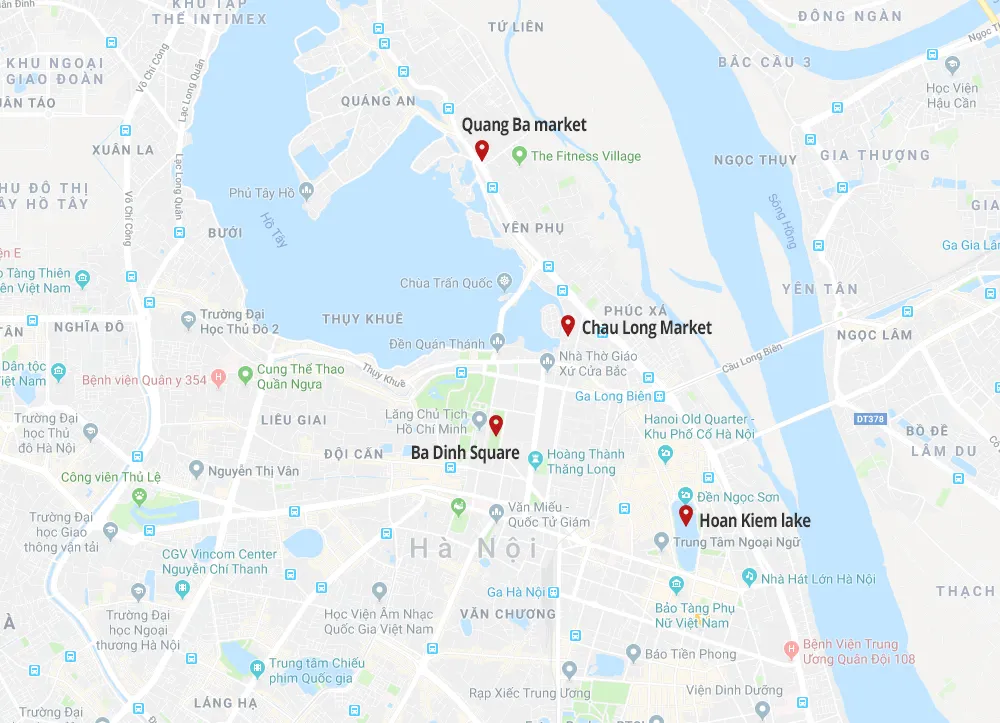
Local life theme:
Travellers who want to feel Hanoi’s heartbeat from the ground up, let’s ease into Hanoi by seeing how locals live, eat, and move through their day.
Start early at 5 AM to visit Quang Ba and Ba Dinh square
Visit a local market – Try a small wet market near the Old Quarter or a neighbourhood one like Chau Long Market. Watch how residents shop, cook, and socialise.
Continue with a walk around Hoan Kiem Lake – Locals gather for tai chi, badminton, and morning strolls.
Optional stop at a temple or shrine along the way, like Ba Da Pagoda, Bach Ma Temple.
Grab a sidewalk breakfast – Sit at a tiny table for a bowl of Pho and a cup of iced tea.
Take a short cyclo ride – Let the city drift past while your driver weaves through the Old Quarter’s narrow lanes.
Book Authentic Half-day Tour of Hanoi
Hanoi in one day
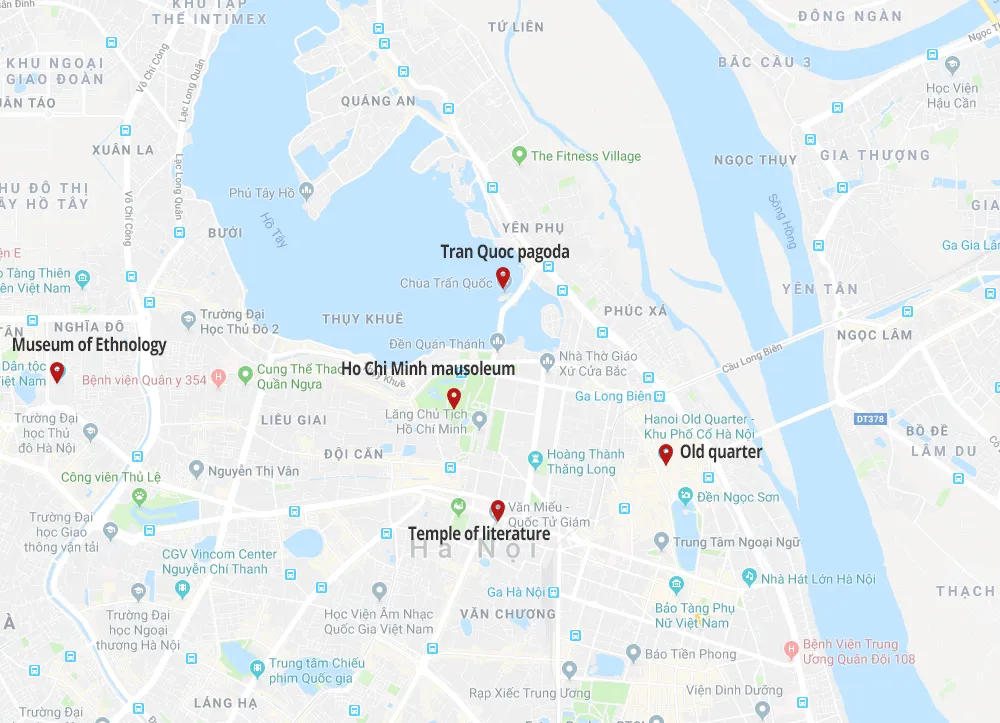
Essential Hanoi city tour:
This Hanoi city tour is ideal for all-day layovers or travellers en route to another destination.
Morning:
- Start early at the French Quarter with a visit to Ho Chi Minh Mausoleum Complex
- Walk to the Presidential Palace and visit One Pillar Pagoda nearby
- Continue to the Temple of Literature, Vietnam’s first university
Lunch: Enjoy your meal at a Vietnamese restaurant.
Afternoon:
- Visit the Vietnam Museum of Ethnology or the Vietnamese Women’s Museum, depending on your interests.
- Take a short break at West Lake—grab a coffee, people-watch, or visit Quan Thanh Temple and Tran Quoc Pagoda
Evening:
- Return to the Old Quarter for a street food tour or dinner at a traditional restaurant.
- Optional: Enjoy a ca tru performance or water puppet cultural show to wind down.
Village & craft experience:
This one-day itinerary is perfect for travellers who want a glimpse of traditional Vietnamese village life and the country’s deep-rooted craft culture, just outside the hustle of the capital.
Morning:
- Head east of Hanoi to Nom Village, a well-preserved community known for its peaceful countryside setting and historic atmosphere.
- Stroll through centuries-old alleyways, mossy temple gates, and traditional red-brick houses.
- Visit Nom Market, Nom Pagoda, and the village communal house, where locals still gather.
- Capture the charm of lotus ponds, rice paddies, and ancestral shrines—this is Hanoi’s slower, quieter side.
Lunch: Enjoy a countryside-style meal at a local restaurant en route to Bat Trang. Expect simple, hearty dishes made with seasonal ingredients.
Afternoon:
- Visit Bat Trang, Vietnam’s most famous ceramics village, located on the Red River bank.
- Watch local artisans shape, glaze, and fire pottery using methods passed down for generations.
- Try your hand at making your own piece on a potter’s wheel—great for families and creative travellers.
- Explore small galleries and shops selling hand-painted bowls, vases, teapots, and decorative ceramics to take home.
Evening:
- Head back to Hanoi in the late afternoon.
- If you still have energy, stop at a rooftop café in the Old Quarter or by West Lake to wind down.
Ideal for: short stays with time to explore more deeply.
Reserve a Hanoi Traditional Village Tour
Hanoi in two days
Day 1:
- Ho Chi Minh Mausoleum, Presidential Palace, One Pillar Pagoda
- Temple of Literature
- Visit the Imperial Citadel of Thang Long
- Walk through the French Quarter, taking in the architecture and the Opera House
- Attend a water puppet show
- Grab dinner and bia hoi at Bia Hoi Junction or a quieter local spot
Day 2:
- Join a cooking class with a market tour
- Or go on a jeep tour around old apartment building, flea market,...
- Explore Dong Xuan Market or take a craft workshop (paper masks, tò he)
- Visit Long Bien Bridge at sunset
- Enjoy dinner at a local restaurant
- If time allows, experience a live music set or art café
Hanoi in three days
Day 1: As in the above itinerary.
Day 2: As in the above itinerary.
Day 3:
- Take a full-day countryside tour to Duong Lam Ancient Village or Van Phuc Silk Village.
- Learn about traditional architecture, silk weaving, and enjoy a local lunch.
- Return to Hanoi by mid-afternoon for some last-minute exploring or a sunset view from Long Bien Bridge.
- Wrap up your trip with dinner at a rooftop restaurant
Hanoi for children
This itinerary is ideal for families travelling with children who want to explore Hanoi in a relaxed, engaging, and kid-friendly way.
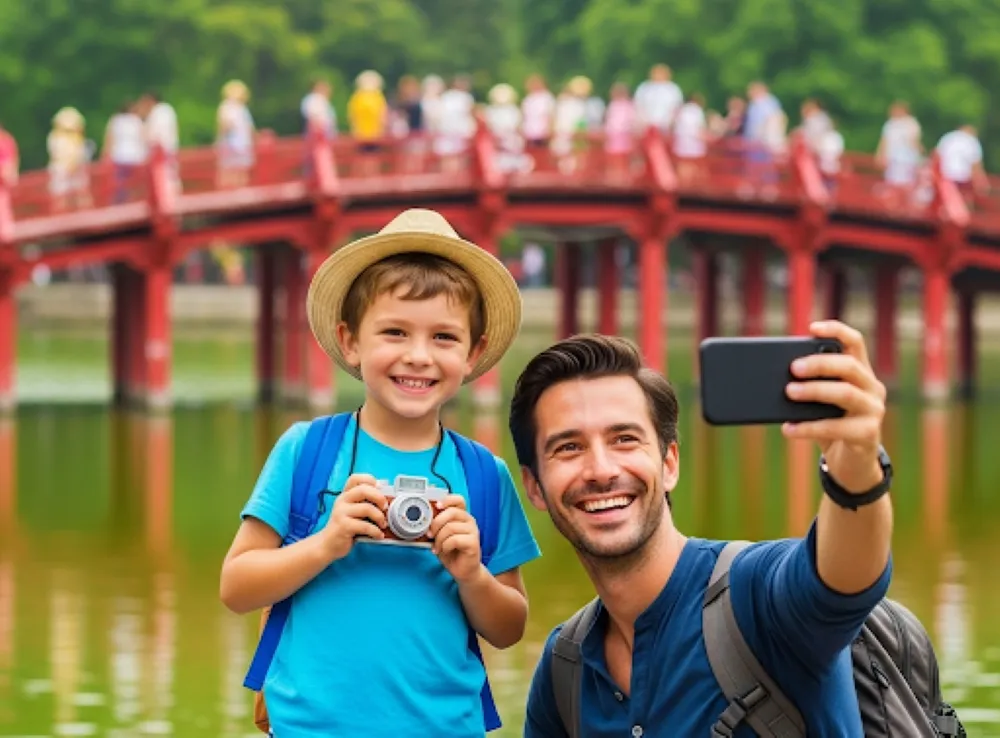
Morning:
- Visit the Temple of Literature – With wide courtyards, turtle statues, and ancient architecture, this is an ideal place to introduce kids to Vietnamese history in a space they can wander freely.
- Explore the Vietnam Museum of Ethnology – Head to the outdoor garden area, where full-sized ethnic minority houses (on stilts, bamboo, etc.) offer space for kids to climb, explore, and learn.
- Optional stop at Thu Le Zoo – For younger kids, this small zoo and green park near the city centre offers a nice mid-morning break.
Lunch:
Dine in a casual, family-friendly restaurant or try kid-approved dishes like spring rolls in the Old Quarter. Many places offer high chairs and simple menus.
Afternoon:
- Take a craft workshop – Choose a fun, hands-on class like: To he figurine-making or Paper mask painting. If your family is up for a short trip out of town, pottery class in Bat Trang is more than perfect trip
- Walk around Hoan Kiem Lake for a breeze
- Stop for a treat at an ice cream shop or try a glass of fresh-squeezed sugarcane juice.
Evening:
- Watch a Water Puppet Show – A fun, colourful performance with live music, dancing puppets, and folklore-themed storytelling that’s great for children.
- Dinner in the Old Quarter – Try a relaxed, outdoor-style place with grilled meat skewers, noodles
If energy allows, end the day with a short cyclo ride through the lit-up streets for a final dose of fun before bedtime.
Hanoi may seem chaotic at first glance—but give it a moment, and the city unfolds into something unforgettable. It’s a place where ancient temples sit beside colonial villas, where tradition meets modern life at every street corner. Whether you’re here for half a day or a few, whether you want to wander ancient alleyways, dive into street food, or make your own pottery—Hanoi has something that speaks to you. And once it does, it stays with you.
So bring an open mind, pack your curiosity, and don’t worry if your schedule isn’t perfect. The beauty of Hanoi is in the moments between the sights.
Want a stress-free, personalised experience?
Let trusted local travel experts from IZITOUR help you craft the perfect Vietnam trip including Hanoi. From curated itineraries to behind-the-scenes experiences, we’ll take care of everything—so you can travel in peace and soak up as much as possible.
- Email: [email protected]
- WhatsApp: +84 382 536 266
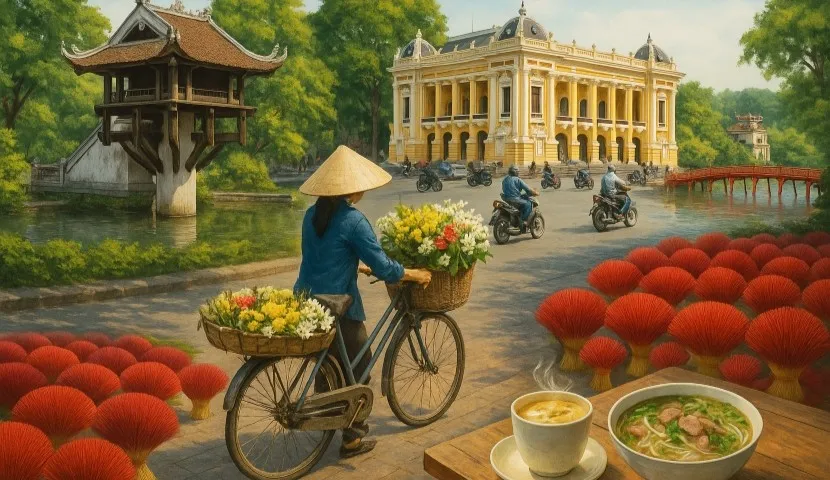
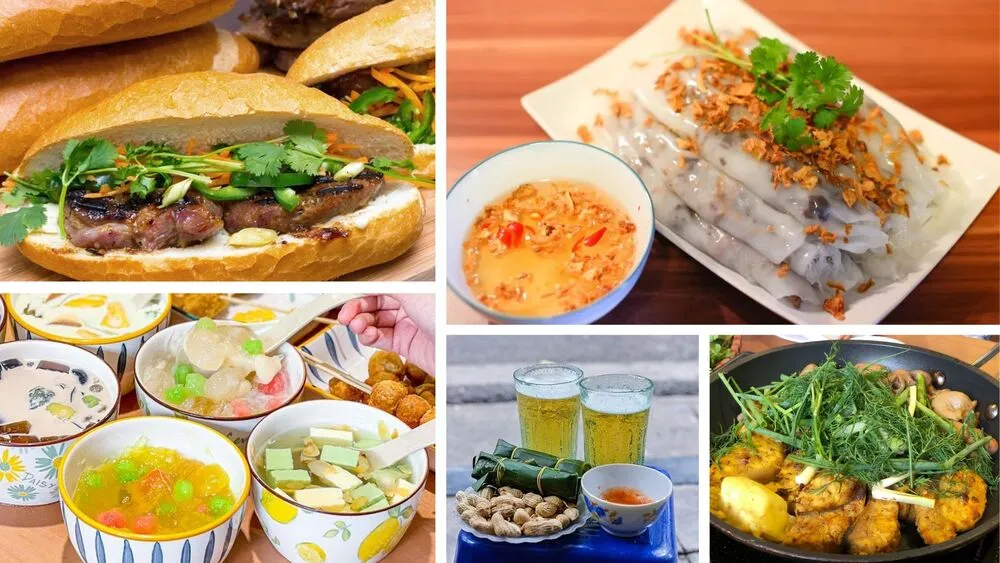







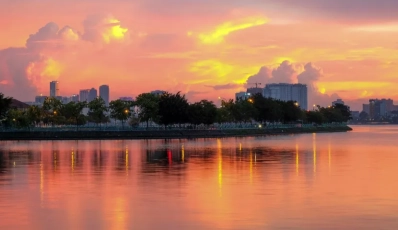
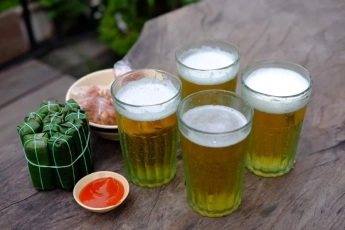
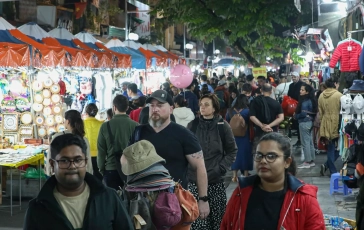
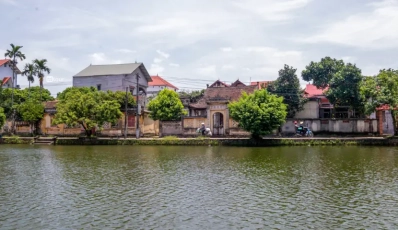

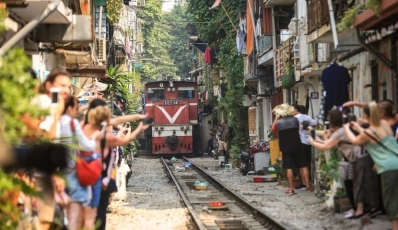


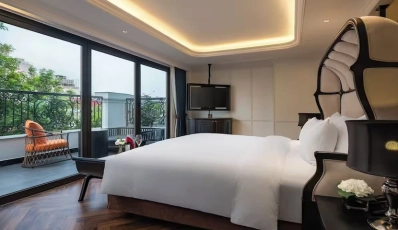
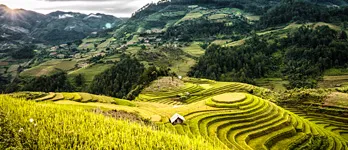
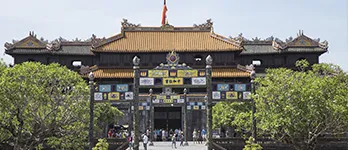
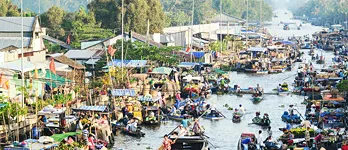

 TRAVELERS' CHOICE 2025
TRAVELERS' CHOICE 2025 


